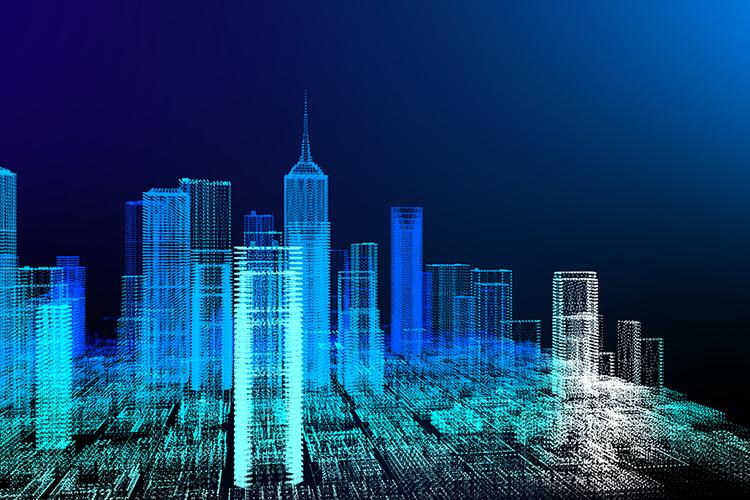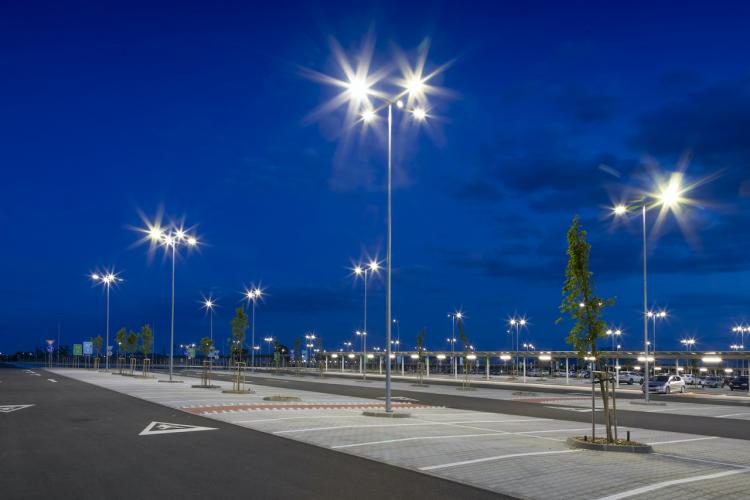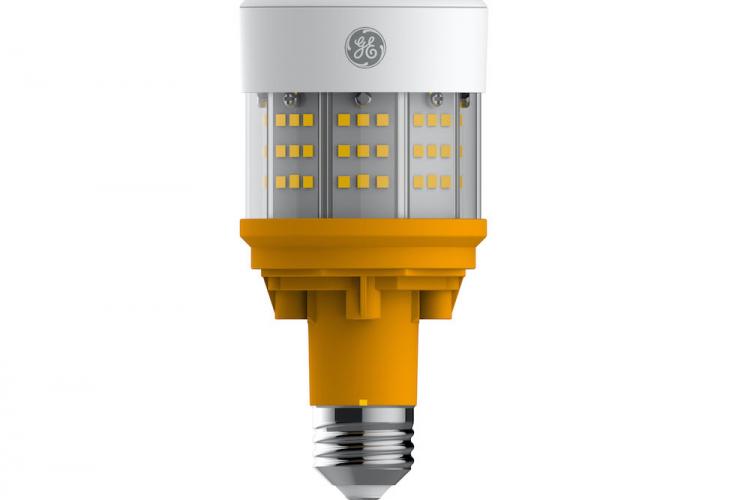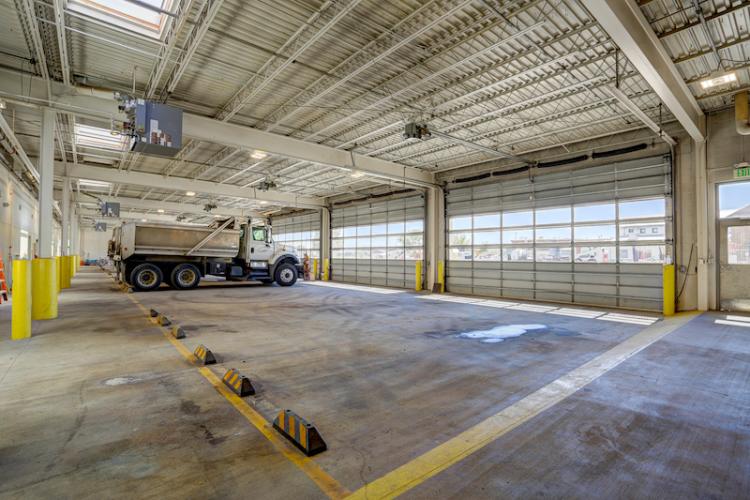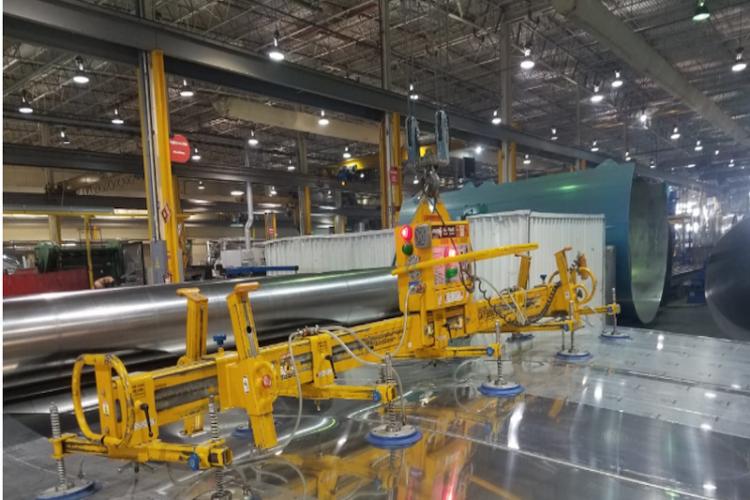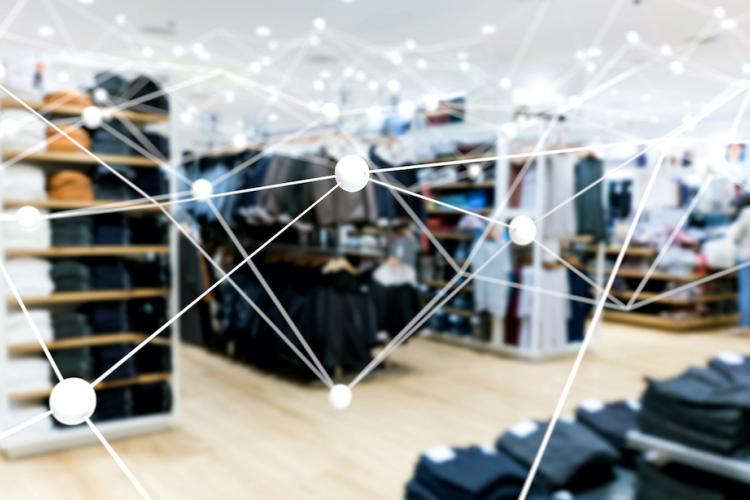Smart Buildings and Workplace Strategies for the Future
Smart Buildings and Workplace Strategies for the Future
Real estate and facility management leaders know that flipping the switch to LED lighting is no longer simply about optimizing energy use. When combined with sensors, controls and networks, buildings become smart—gaining even greater efficiencies. Connected lighting now has the potential to unleash additional productivity and revenue outcomes, thanks to space optimization and utilization, more informed real estate decisions and increased employee satisfaction with their work environment.
The Smart Building Evolution
The smart building’s evolution is top of mind for real estate and facilities management leaders who continuously focus on reducing operating costs, meeting sustainability objectives, optimizing space within their real estate portfolio and improving their employees’ daily work experience. While over the past decade much attention has been focused on energy savings and achieving sustainability goals, today there is tremendous attention being paid toward space utilization and optimization, meeting room management and increasing employee effectiveness in the workplace.
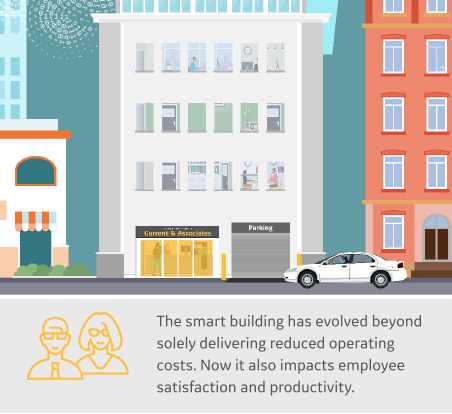 Companies are looking for ways to connect their employees with each other and the office to drive productivity. To enable the work experience of the future, organizations have begun to implement an entirely new work environment: the digital workplace. By integrating the technologies that employees use (e.g., email, environmental controls, workflow management tools, virtual meeting tech, etc.) with a sensor-enabled environment, companies are able to connect their employees with one another to increase collaboration and productivity, enhance the ease of use of the physical workplace and create a more welcoming environment.
Companies are looking for ways to connect their employees with each other and the office to drive productivity. To enable the work experience of the future, organizations have begun to implement an entirely new work environment: the digital workplace. By integrating the technologies that employees use (e.g., email, environmental controls, workflow management tools, virtual meeting tech, etc.) with a sensor-enabled environment, companies are able to connect their employees with one another to increase collaboration and productivity, enhance the ease of use of the physical workplace and create a more welcoming environment.
In one particular perspective of value proposition for smart buildings, the facilities management company JLL provides a “3-30-300” model as a basis of value for quantifying potential benefits. Within their model, potential savings guidelines are presented as follows: $3 per square foot for energy savings, $30 per square foot for space utilization/optimization savings and $300 per square foot pertaining to improving employee effectiveness. Although each category of savings is important, the potential benefit of $300 per square foot gives credence to today’s focus of improving employee effectiveness in the workplace.

JLL further explains in the report, Health, Wellbeing and Productivity in Offices: The Next Chapter for Green Building: “After all, staff costs, including salaries and benefits, typically account for about 90 percent of business operating costs. Therefore, what may appear a modest improvement in employee health or productivity can have a huge financial implication for employers—one that is many times larger than any other financial savings associated with an efficiently designed and operated building.”
Technology continues to evolve and positively impacts each of the three categories of focus for smart building initiatives among global real estate leaders. Such technology is rooted in highly advanced digital sensors that provide continuous information in real time for all aspects of smart building decision-making and overall operation.
Such highly intelligent digital sensors operate together in an advanced network to further expand opportunities for savings in energy, positive impact toward sustainability goals, optimized space planning, utilization and optimization, and enabling a higher-quality workplace for improved employee efficiency.
Let’s look briefly at how each of the three areas of attention by global real estate executives can be further enhanced through technology available today.
Energy Savings and Sustainability
LED lighting saves 50 percent or more over the energy required for traditional lighting technology. Smart sensors that assist with daylight harvesting, task tuning and dimming for even more refined quality of lighting in the workplace can save an additional 20 percent to 30 percent lighting energy.
LED lighting alone can save organizations 50 percent or more energy compared to traditional lighting methods. Controls providing tools, such as daylight harvesting, occupancy sensors and dimming, can save up to 30 percent more energy.
 Current, the market leader for quality and robustness of LED lighting products, continues to grow its portfolio of intelligent lighting solutions, providing even more options for organizations. The increased portfolio of interior and exterior lighting solutions, as well as emerging technology to tune LED fixtures for color temperature and lumens output, enables companies to deploy diverse LED-based lighting solutions while achieving energy savings and providing more quality work environments.
Current, the market leader for quality and robustness of LED lighting products, continues to grow its portfolio of intelligent lighting solutions, providing even more options for organizations. The increased portfolio of interior and exterior lighting solutions, as well as emerging technology to tune LED fixtures for color temperature and lumens output, enables companies to deploy diverse LED-based lighting solutions while achieving energy savings and providing more quality work environments.
Pertaining to environmental improvements in the modern workplace, sensor technology advancements now enable even more comprehensive, real-time data. Consider the traditional HVAC system in a building. What once relied on a limited number of wired thermostats, placed in a building at the time of construction to provide temperature readings to the HVAC system, has given way to the flexibility of the facility easily responding to change. In the new paradigm, easily deployed wireless sensors and wireless thermostats can be placed and adjusted throughout the building to provide much more granular controls, comfort and associated energy savings.
Space Planning, Utilization and Optimization
One of the typical hallmarks of any smart building is its motion sensors. Such sensors send key information, often to the lighting system, to let it know that a particular space is occupied. While this has helped contribute to energy savings and safety of employees, it has done little to contribute to space optimization.
In a recently published Gartner report, three particular findings include:
- “Surveys on office space utilization corroborate that the average utilization rate of office space is around 65 percent.”
- “The global average utilization rate of meeting rooms is just 30 percent and around 40 percent of global office space remains empty.”
- “By 2021, an increase in remote employees will allow organizations to support 40 percent more workers in the same office space as they use today.”
 Sensor technology has expanded its space utilization capabilities quickly, and there are significant business benefits that can be achieved. With the advent of real-time sensor feedback and more granular sensor control, global real estate executives can have all of the information they need to make optimum real estate decisions. The emergence of people-counting sensors (based on human heat signatures) and adjustable-view angle sensors (much like the aperture of a camera) to more specifically focus the “cone of visibility” of the sensors helps provide real estate decision-makers with accurate and real-time information pertaining to usage of space.
Sensor technology has expanded its space utilization capabilities quickly, and there are significant business benefits that can be achieved. With the advent of real-time sensor feedback and more granular sensor control, global real estate executives can have all of the information they need to make optimum real estate decisions. The emergence of people-counting sensors (based on human heat signatures) and adjustable-view angle sensors (much like the aperture of a camera) to more specifically focus the “cone of visibility” of the sensors helps provide real estate decision-makers with accurate and real-time information pertaining to usage of space.
Data provided by such sensors offers tremendous input to business productivity applications such as integrated workplace management software (IWMS). An extensive network of these applications can take the data collected and turn it into actionable insights that help businesses make smarter decisions. Current has a number of application partners dedicated to bringing those practical space-optimization use cases to life.
Teem, for example, has the ability to use Current sensors to track occupancy and then connect that information to reservation and space-usage data. Businesses can leverage these real-time insights to cancel room reservations and release spaces back to the workforce, enabling employees to meet and collaborate more efficiently. Findings can later be used to assess space utilization and influence future real estate decisions.
Sensors can also feed data to iOFFICE, a workplace management solution provider that aims to increase productivity and decrease operational expenses. The resulting insights impact space utilization, employee engagement, productivity and more. For example, building managers can track which spaces are experiencing the most traffic and allot maintenance accordingly, ensuring employees are in a clean, functioning space that promotes a positive work experience. Maintenance savings and optimization are also aided with tools from CrowdComfort. This application partner empowers employees to report facilities issues in their environment, funneling the reports to the right person so requests are handled quickly and efficiently. The solution can connect to Current’s workplace sensors to verify claims and enhance reported issues with additional information.
A solution with occupancy sensors and people-counting data in commercial office spaces can allow for better space optimization and utilization, more informed real estate decisions, and increased employee productivity and retention.
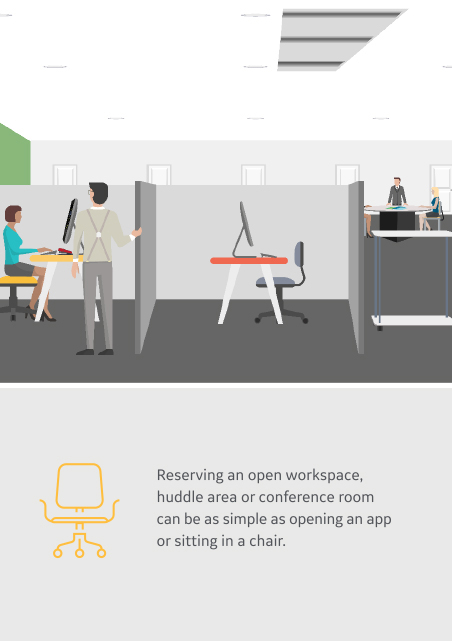 Serraview, an office space management and utilization software, is in use at JPMorgan Chase for commercial office space management. The financial institution is using the application in a more “passive” sense for tasks such as tracking employee office assignments/locations. However, the benefit of such applications is greatly expanded through interfacing with real-time data. In this “active” usage of such IWMS applications such as Serraview, Teem or iOFFICE, day-to-day tasks such as scheduling an open conference room, finding an open office area such as a huddle room or reserving a particular unoccupied “hoteling space” to use for the day can easily be accomplished. Simply enabling the release of scheduled but unused conference rooms through an IWMS app can provide tremendous benefits for the collaborative workplace.
Serraview, an office space management and utilization software, is in use at JPMorgan Chase for commercial office space management. The financial institution is using the application in a more “passive” sense for tasks such as tracking employee office assignments/locations. However, the benefit of such applications is greatly expanded through interfacing with real-time data. In this “active” usage of such IWMS applications such as Serraview, Teem or iOFFICE, day-to-day tasks such as scheduling an open conference room, finding an open office area such as a huddle room or reserving a particular unoccupied “hoteling space” to use for the day can easily be accomplished. Simply enabling the release of scheduled but unused conference rooms through an IWMS app can provide tremendous benefits for the collaborative workplace.
To give credence to the magnitude of such benefits, let’s take a look at the value proposition for more efficient meeting room management. If we consider a simple dataset of 10,000 employees who each waste five minutes a day scheduling, looking for or waiting for a conference room, and use a salary rate of $50 per hour per employee, the savings for such a resource pool is $10 million annually. Using a fully burdened employee rate, the savings are almost double that. The example clearly demonstrates why this particular business objective is a common focus for global real estate leaders today.
When considering space optimization initiatives, it is important to note that sensors can be mounted either permanently or temporarily. Wireless, battery-powered sensors can easily be moved from one particular spatial area of interest to another when conducting space utilization studies. Through multiple iterations, companies can gather the critical and accurate information needed for optimum decisionmaking. Applications like Teem and iOFFICE can take that data and tell you the perfect placement of desks or workspaces for new employees or exactly how much space you’ll need to rent for your office once your lease is up, maximizing the space you have while eliminating that which you waste. The flexibility to perform such analyses can help companies more easily determine the best kinds of workspaces to deploy in new or remodeled facilities.
As Gartner states, “Smart buildings provide workers with a variety of space types that can be reserved depending on the work they need to do. A smart building marries its knowledge about people, their work and the physical workspace to offer an engaging work-life ambience.”
Increasing Employee Effectiveness in the Digital Workplace
Why is there so much focus today on the digital workplace? In its digital workplace survey, Gartner notes: “Just 11 percent of respondents said they were completely satisfied with their physical workspace.”
Yet on a more positive note, and helping to fuel such attention to the digital workplace, Gartner’s findings also conclude: “Employees who are satisfied with their workplace are 16 percent more productive, 18 percent more likely to stay and 30 percent more attracted to the company over competitors.”
In another recent smart building survey by Gartner, findings state that “97 percent of respondents said that the workplace was critical to employee productivity and also had a significant impact on employee happiness.”
Leading companies are not happy with status quo. They are continuously evaluating the workplace of the future to provide the best work environment for their employees. It is not enough for them to implement LED lighting for energy savings; they want to provide the best quality of light possible for an optimum work environment. These companies are extending beyond simply providing a set color temperature and lumens for the workplace.
High-quality lighting with the flexibility for adjustable color temperature and intensity of light provided, not only has the power to enhance architecture, elevate aesthetics and increase the energy efficiency of a space, but also improves the quality of life in the workplace. Through such lighting advancements, the full dynamic range of natural daylight can be re-created in the digital workplace. In essence, what is known as Circadian rhythm (the natural wake/sleep clock of the human body) could be aligned with the parameters of light provided to establish a more efficient harmony between the work environment and physical environment of the human body. JPMorgan Chase has recently embarked on a pilot project with Current to further evaluate potential benefits of such adjustable lighting technology.
High-quality lighting with flexibility in color temperature can enhance architecture, elevate aesthetics, increase the energy efficiency of a space and improve the quality of life in the workplace.
Furthermore, embedded sensors in lighting fixtures and advancements in user interface provide even more granular control in the workplace. As the future of lighting technology evolves, businesses are considering providing even more flexibility for employee control of lighting in their personal workspace. As JLL explains: “Putting trust in the occupier and putting them at the center of design, including personal control over their indoor environment, can reap rewards in terms of satisfaction, productivity and energy performance.”

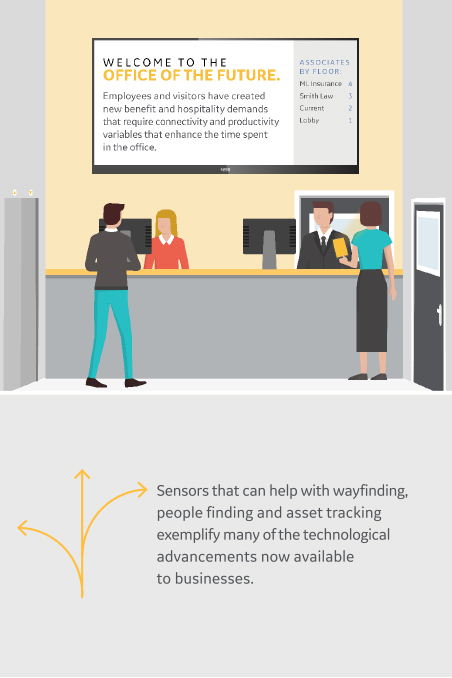 Wayfinding, people finding and asset tracking are other examples of advancements in technology within the digital workplace. What was once considered emerging technology, geographic navigation through mobile applications is now as commonplace with a smartphone as making a phone call on the same device. But what about inside a building or on a campus of company facilities? Again, due to rapidly evolving sensor technology and commonly available communications protocols, wayfinding, people finding and asset tracking inside the digital workplace will soon be pervasive. The digital platform of data available from sensors in facilities enables applications such as these, as well as a whole host of future workplace applications, to be developed.
Wayfinding, people finding and asset tracking are other examples of advancements in technology within the digital workplace. What was once considered emerging technology, geographic navigation through mobile applications is now as commonplace with a smartphone as making a phone call on the same device. But what about inside a building or on a campus of company facilities? Again, due to rapidly evolving sensor technology and commonly available communications protocols, wayfinding, people finding and asset tracking inside the digital workplace will soon be pervasive. The digital platform of data available from sensors in facilities enables applications such as these, as well as a whole host of future workplace applications, to be developed.
For more detailed information on building design features that could provide positive impacts on the health, wellbeing and productivity of employees in the digital workplace, please review the attachments provided with this Executive Summary, along with the vast list of reference articles provided in the further reading section.
Execution and Efficiency in the Field
While Current provides a very diverse repertoire of solutions for smart buildings of the future, we also believe in leveraging experience in the field and have a large proven partner network to do so. A world-class partner network is paramount for achieving success in the selection, procurement, installation and ongoing support of smart building technology. Current’s partners grow with us to bring the latest technology advances in intelligent environments to companies. Nobody provides all of the solutions required. However, a strong partner network can make all of the solutions available and more easily interoperable.
Finally, because the sensor network infrastructure is truly the underlying platform for all smart buildings’ operational efficiency, it must be “open” and able to evolve with a building. The sensor network is to the building what the central nervous system is to the human body. Therefore, the platform must be “open on the top” to continuously allow for the addition of new business productivity applications that need to leverage data to provide value. In addition, it must be “open on the bottom” to allow for ever-evolving sensor technology, regardless of vendor, to plug into the network and provide new information for future efficiency gains.
Such an availability of big data, ever-advancing sensor technology and open APIs to access the data enable companies with endless potential to more efficiently operate and enhance the workplace of the future.
Several brands are already reducing energy usage and improving productivity with the help of Current and our partners. More than 600 Morgan Stanley wealth management branches are installing LED lighting and digital controls to cut energy consumption by 50 percent. The rollout is also expected to boost productivity and elevate the customer experience. Another major bank in the Mid-Atlantic and Southeast U.S. is retrofitting thousands of branches with Current. More than 1,500 of its branches have been updated and outfitted with AllSites™, and that number is expected to reach 4,000 by the end of 2018.

JPMorgan Chase is upgrading nearly 4,500 branches across the U.S. through a partnership with Current. New LED lighting and controls will decrease lighting-related energy usage by about 50 percent. JPMC will leverage our AllSites application to gain an enterprise-level, cloud-based view into energy and HVAC efficiency across its retail branches. The bank will also use an app built by Weathermatic to manage water usage. That pairs perfectly with Current’s platform, which manages HVAC, lighting and leak detection as part of its energy management.
How Current’s Solution Makes an Impact
Current’s Daintree† Enterprise is the market’s leading purely standards-compliant wireless IoT platform for commercial building deployment. Its ability to deliver more value per feature is enabled by the novel method of compressing the functionality of three typical “systems” used to manage electrical and HVAC elements in a facility—room solution, building solution, enterprise solution—into one. This compression eliminates much of the costs. The Daintree “edge,” meaning the devices themselves, are a functioning switch, sensor, actuator, monitor and network carrier with the ability to scale effortlessly to cover tens of millions of square feet and thousands of facilities.
Daintree Enterprise is among a growing list of emerging solutions adding intelligence to the edge in a quest to deliver short-term benefits from IoT applications. Since most of these products represent an investment in long-term infrastructure and a commitment to a given path, the decisions made today may have decades-long implications. Daintree is one of—if not the—most reliable and mature options on the market. The Daintree team pioneered the use of mesh radio frequency (RF) in commercial building technology. With much of our team intact after over 15 years, delivering virtually all of the industry firsts, 300 million square feet of active users and almost 10 years of ControlScope application development, the maturity of the solution is orders of magnitude beyond that of every other lighting-oriented IoT solution provider in the market.
Competitors cannot scale building management systems (BMS) like Current can. Other brands generally start at the room and offer building aggregation and operation features, but then require expensive and custom BMS integrator work for any enterprise functionality. Daintree’s architecture and application set are designed specifically for the enterprise and represent dozens of engineering years of effort beyond what any of the emerging building IoT suppliers are delivering today. Information about the application opportunities does a nice job of highlighting the need for truly functional enterprise IoT systems. Don’t confuse this for a second with the ability to deliver a solution. They have years of work ahead of them.
Current is already leading the pack when it comes to providing enterprises with the IoT applications they want, and we will continue to offer the most flexible and all-encompassing platform. Current supports the ZigBee Building Automation Standard in its entirety. There are dozens of regularly deployed devices manufactured by the large ZigBee ecosystem, enabling a dramatic range of applications in lighting, HVAC, power metering, environmental sensing and beyond. While there are many ZigBee solutions offered by the majors, not one is purely interoperable; they have built their businesses on the leverage of a proprietary offer. The benefits of a large standards-based ecosystem include competition at the device level, your choice of hardware manufacturers and ultimately your choice of software providers. The investment in a true standards-based technology will provide your organization the ability to select another software supplier without removing and replacing hardware. No other edge-to-cloud IoT solution provider in this space can make this same claim.
Combining standards-based edge lighting devices with native power metering, HVAC devices, control applications and sensor analytics is not possible with any of the other solutions platforms today. This functionality and the hundreds of devices used in these applications are enabled by the ZigBee standard.
Current is more confident than ever that we can provide the highest-quality and most diverse lighting solutions available, robust sensor technology and networks for operational efficiency, an open environment for future technology advances and a partner network to help all aspects of a smart building achieve success.
Contact a representative today to see what this might look like for your business.
![]()
†Current with Intel technology, is transforming smart building management through an open, wireless control solution that maximizes the value of building assets, unlocks operational efficiencies, and digitalizes intelligent environments.
Intel and the Intel logo are trademarks of Intel Corporation in the U.S. and/or other countries.


